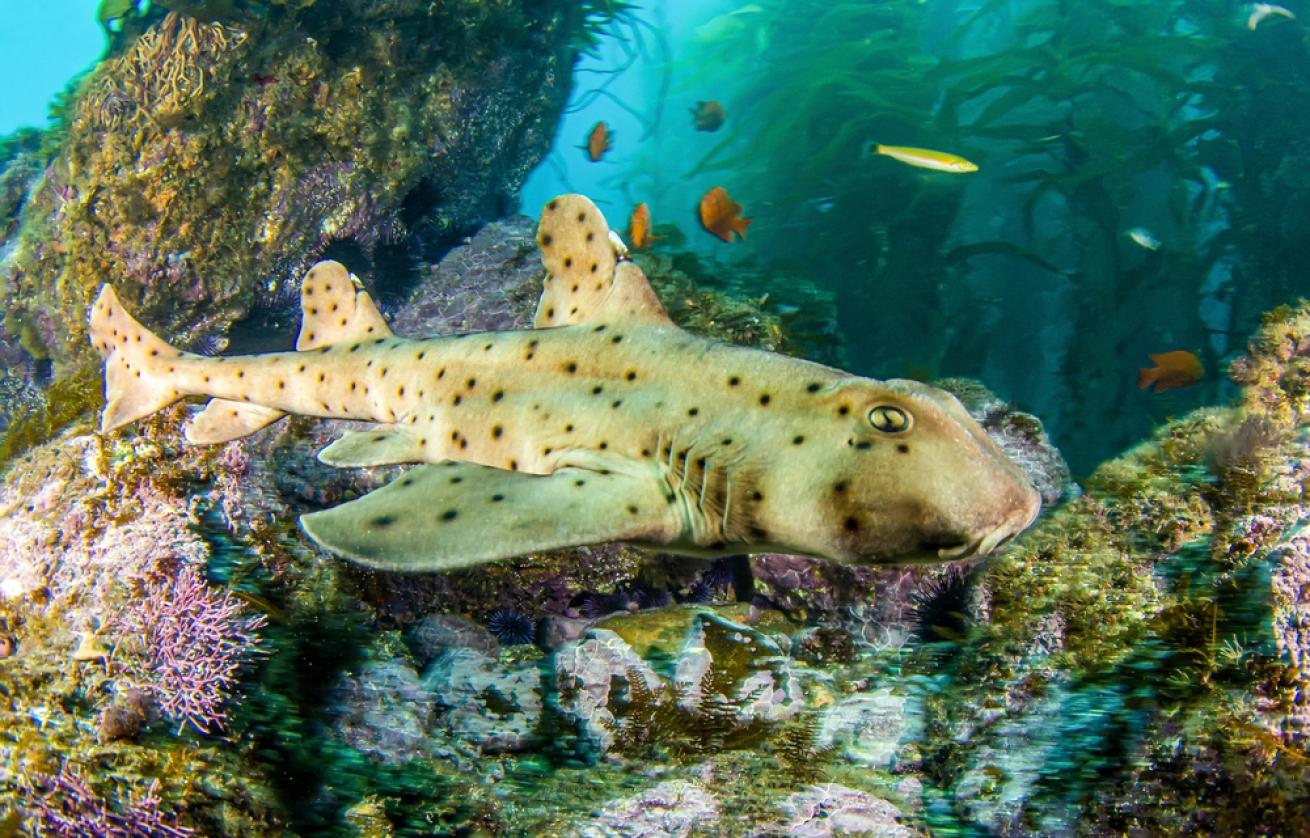Interesting Facts about Horn Sharks

Shutterstock.com/Enessa Varnaeva
These relatively small, bottom-dwelling sharks mostly eat invertebrates like crabs, shrimp and sea urchins, and hunt primarily at night. Named for the ridges behind their eyes, horn sharks are also best known for their beautiful spiral-shaped egg cases, which females wedge between rocks in the springtime. Horn sharks are slow swimmers, and have been known to crawl along the bottom using their fins. Population declines have been reported in areas of Southern California frequented by divers, but beware: Divers who poke and grab them have been bitten by sharks defending themselves.
Related Reading: Discovering Patagonia's Winged Comb Jelly
Facts About Horn Sharks
Where to Find Them In shallow waters in the Pacific, off the coast of Southern California and Mexico
Threat Level Data Deficient (IUCN Red List)
Maximum Size Up to 4 feet
Interesting Facts: While some species of sharks are highly migratory, studies suggest that horn sharks have an extremely small home range of about 11,000 square feet. One was found in the exact spot where it had once been caught, tagged and released 11 years earlier, and the farthest any tagged horn shark has traveled is 10 miles. • The scientific name heterodontus means “different teeth,” referring to the fact that horn sharks have some teeth that are sharp and some that are used for crushing invertebrates. • Though there is no targeted commercial fishery for horn sharks, they are commonly caught as bycatch. • The horn shark is a species of bullhead shark.
Related Reading: 7 Liveaboards to Book if You Love to Learn
Love scuba diving with sharks? So do we. For more, visit the Sharks section of our website.
David Shiffman is a Ph.D. student at the University of Miami’s Abess Center for Ecosystem Science and Policy, where he studies shark ecology and conservation. Shiffman is happy to answer any questions you have about sharks on Twitter (@WhySharksMatter) or Facebook (facebook.com/WhySharksMatter).










